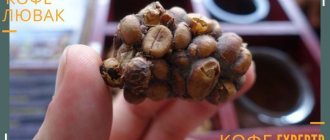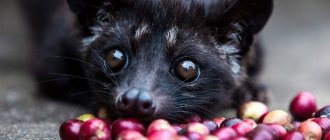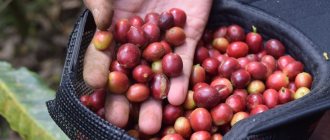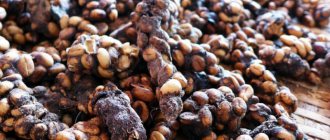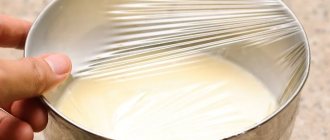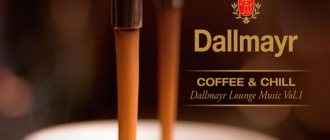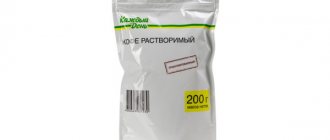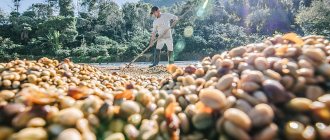By inna2041 Jan 11, 2018
24574
|
0
Every day on our planet, people consume over two billion cups of coffee. Therefore, this drink can rightfully be called a leader among others sold in stores. And it has gained popularity not only because it has a noble aroma and taste, but also because today there are many recipes and methods for preparing it. True coffee fans are ready to spend a lot of money without searching for promotional codes and purchase elite varieties. And the fact that they will end up paying several hundred dollars for one hundred grams of the divine drink does not stop them at all. In this article we will tell you what the most expensive coffee in the world is.
Even though coffee does not grow everywhere on our planet, its harvest directly depends on weather conditions, and coffee plantings are vulnerable, prices for its beans are only rising. Especially if we are talking about a decent product of good quality. What is the most expensive coffee in the world?
Black Ivory
Translated it means “Black Tusk” and the price of this coffee beans is very high. Apart from Thailand, Black Ivory is not produced anywhere in the world. These are not just roasted coffee beans. In order to get a kilogram of this coffee, it is necessary to collect about 33 kg of selected Arabica beans and they must be eaten by an elephant, along with rice, cane sugar and fruit.
For a kilogram of Black Ivory beans you will have to pay more than $1000.
Digestion of this mixture lasts up to 35 hours. During this time, the grains become saturated with fruity aroma. As the berries pass through the elephant's gastrointestinal tract, they break down protein, which would otherwise give the drink a bitter taste if the grains were processed normally. The taste of Black Tusk is soft, without bitterness, with a slight hint of fruity aroma.
To get grains ready for brewing, you need to select berries from the manure, wash them thoroughly and dry them. It is possible to drink a mug of this coffee only in the Maldives, Abu Dhabi, and also in the reserve, which is located on the borders of Thailand and Laos.
Taste of the drink
The taste of coffee is affected by:
- age, sex of animals;
- living conditions;
- daily ration;
- roasting method;
- storage conditions;
- water quality;
- recipe.
The most delicious drink is obtained from beans fermented by young male musangs living not on farms, but in the wild.
The stomach juice of civet cats contains the aphrodisiac musk. Its components enrich the grains with a floral, honey-fruit aroma, which cannot be achieved artificially. The drink does not give any sourness or harsh sensations. Its taste is soft and balanced.
The fruity-caramel aftertaste with notes of chocolate lasts up to four minutes. Unlike classic Arabica, Luwak has less bitterness and astringency and has more flavor nuances.
Kopi Luwak
In second place in the ranking is coffee, which is produced only in 3 countries - South India, the Philippines and Indonesia. Musangs (also known as luwak) are small animals whose food consists of ripe coffee beans.
The average cost of one cup of this coffee is $100.
Civet, a substance present in the gastric juice of musangs, helps give the final uniqueness and uniqueness to the taste of coffee. In total, about 500 kilograms of Kopi Luwak are produced annually. Only true gourmets can afford it. They say this coffee has a subtle aroma of chocolate and jungle.
Elite coffee Kopi luwak (Kopi-luwak)
Perhaps one of the most famous varieties of coffee, it is also often mistakenly considered the most expensive. It is also obtained using animals - this time with the help of small squirrel-like animals called musangs.
The production of this variety is established in the Philippines and Indonesia. The price for it can vary from two hundred and fifty to a thousand dollars per kilogram. Kopi Luwak is interesting because it is actually produced in a factory.
Despite the fact that previously the quality of this coffee was also ensured by the fact that the musangs themselves looked for only the best fruits of the coffee tree for food, now they are simply kept in cages and fattened, which cannot but affect the quality.
However, special enzymes contained in the digestive tract of musangs still break down the proteins responsible for the bitterness of coffee beans, greatly improving the taste of the drink.
Hacienda La Esmeralda
The peculiarity of the Hacienda la Esmeralda variety is that the coffee trees from which the beans are collected grow near Guava trees on the slopes of Buru in Panama.
The cost of Hacienda la Esmeralda beans is slightly more than $100 per 450 grams.
The taste of this coffee is quite extraordinary.
Blue Mountain
A variety of Arabica beans. Coffee trees grow on mountain plantations in Jamaica. The grains themselves are of a very unusual color - blue-green. Hence the name – “Blue Mountain”.
The cost of the beans is $200 per 450 grams.
Light astringency, slight sourness and a breathtaking aroma are what perfectly characterize Blue Mountain.
Rules for serving elite coffees
When serving coffee, like any other drink, there are rules. There are few of them, and they are not difficult to remember. The most important of them is that the coffee must be freshly ground. Grinding grains in advance and leaving them “for later” is a bad habit. Ground grains tend to absorb foreign odors and lose taste.
Therefore, you should grind coffee only immediately before brewing. It should be remembered that the grind size depends on the method of preparing the coffee. The universal recommendation is this: the longer the coffee is in contact with water, the coarser the beans should be ground. Another rule is to serve in a heated container. Thus, the drink will not lose its temperature and, accordingly, its taste.
Coffee from Saint Helena
Saint Helena Island can be called pristine. It is located far from industrial facilities. Clean air and good ecology are the key to successful cultivation of coffee trees and production of an elite drink.
The price of 500 grams of such coffee beans is about $100.
The plantations are located at an altitude of 3000 meters, the soil is of volcanic origin. Coffee beans from St. Helena Island are an elite and rare variety.
Production Features
True connoisseurs can pay a lot of money for a rare variety of coffee beans, but you need to understand how it differs from the drink that we can buy in a store. The price of such coffee is primarily influenced by the small growing area, conditions and small production volume.
And how much does this coffee cost? Prices can reach sky-high heights: about a thousand euros per kilogram or fifty euros per cup. It is grown in only a few countries, namely:
- Brazil;
- Indonesia;
- Philippines;
- Vietnam.
But which variety is the most unusual of all? Here, fermented varieties of grains rightfully occupy the first place. They are obtained with the help of animals that feed on coffee beans. The grains pass through their digestive tract, where the fermentation process takes place. It is believed that this gives coffee a special taste and relieves it of bitterness.
El Ingerto
The place of origin of El Injerto coffee beans is the Republic of Guatemala. This variety of coffee is much cheaper than Black Ivory, but still expensive.
Its average price is $50 per 450 gram package.
The peculiarity of this coffee is its exquisite taste and aroma. The climate of Guatemala is cloudy and it often rains, which is why El Injerto has an extraordinary taste and the highest quality of beans.
The secret of taste is in enzymes
Enzymes and musk play a key role in cooking the grains. Once in the musang's stomach, coffee berries undergo multi-stage fermentation, as a result of which caffeine and peptides are destroyed in them. Enriched grains lose their specific bitterness and acquire a delicate caramel taste.
The second important component is civet - musk secreted by representatives of the Viverridae family. It is known to perfumers as a powerful aphrodisiac and fixative of light notes in compositions.
It contains indole, skatole, butyric acid and civet. Thanks to them, the olfactory pyramid of the substance breaks down into honey-floral notes and fruit odors. It is impossible to achieve this effect with the help of chemicals and fragrances.
Civet gives Luwak coffee its special warmth and also has a fixing function. It binds essential oils, so the drink has a long (up to 4-5 minutes) fruity-caramel aftertaste. For comparison, the aroma of classic coffee disappears within 30-45 seconds.
As a result of prolonged fermentation, the grains are cleared of pulp and shells, and the oils they contain are partially broken down by gastric juice. All this increases the extractive characteristics of coffee and reduces the viscosity of the finished drink.
Hacienda Santa Ines
This is perhaps the best coffee produced in Brazil. Refreshing notes of citrus and a taste of chocolate prevent this coffee from being confused with other varieties.
450 grams of Fazenda Santa Ines, costs $50.
Coffee beans of this variety have become especially popular and widespread in Brazil and Canada. The main distinguishing factor is the manual collection of grains.
Los Plains
Los Plains are grown in El Salvador. It has a sweet floral aroma, and bright notes of cocoa are felt in the taste. Also, it is worth noting that the taste of this coffee is very rich and opens with each subsequent sip of the aromatic drink.
Price 450 gr. of Los Plains coffee beans is $40.
Los Plains coffee has received many international awards and its taste is highly valued by gourmets.
How to brew Luwak coffee
First, we will describe how the Vietnamese, whose product received high marks from tourists, cope with brewing this type of coffee.
Vietnamese Luwak coffee is prepared in a mug. Its bottom is poured generously with condensed milk, then ground coffee powder is poured through the filter. The entire consistency is pressed down with a press, and again boiling water is poured through the filter (to slow down the process).
At home, it is best to prepare coffee from the Luwak animal in a Turk. Some coffee lovers are sure that the drink must be consumed in its pure form, in other words, without any additives or sugar.
Others, on the contrary, do not imagine coffee as unsweetened. Moreover, according to some recipes, sugar should be added during cooking. As a result, the taste of the drink is bright, and the noble coffee foam is preserved better with sugar.
At home, it is best to prepare coffee from the Luwak animal in a Turk.
You can try adding a small pinch of table salt during cooking. They say that this makes the drink richer.
How to brew Luwak coffee classically:
- slightly warm the Turk over the fire;
- then add ground coffee into it. If necessary, add spices and sugar;
- Warm the Turk again, fill it with very cold water almost to the top and mix everything with a spoon. The slower the drink is brewed, the tastier it comes out;
- After waiting for foam, remove from heat and cool. Then repeat the procedure a couple of times. It is necessary to take into account that the drink should not boil and the foam should remain intact - otherwise the coffee aroma will quickly disappear;
- remove the foam with a spoon;
- pour the coffee into cups (if everything is done correctly, the foam will occupy the entire surface of the drink).
In addition to sugar, and in rare cases, salt, spices, alcoholic beverages, and milk are added to Luwak coffee. Experimenting with their combination and quantity allows you to get an unimaginable number of recipes. The following spices are suitable for making coffee: cinnamon, cardamom, vanilla, ginger, allspice, cloves and more.
How to brew Luwak coffee - recipes
And now about how to brew Luwak coffee using ready-made recipes.
"Mediterranean coffee":
- glass of water;
- 2 teaspoons coffee;
- cocoa, cinnamon, anise - ½ teaspoon each;
- ginger and orange zest - a quarter each.
"With cinnamon and black pepper":
- coffee is prepared in the usual way;
- Put a pinch of cinnamon on the bottom of the Turk along with sugar, and at the end of cooking, throw a peppercorn into the resulting drink.
“With cardamom and spices”:
- 1.5 glasses of water;
- 3 teaspoons coffee;
- 5 boxes of green cardamom;
- ½ cloves;
- anise and ginger powder.
Add finely chopped cardamom, cloves, a quarter spoon each of ginger and anise to a well-heated pot over low heat.
Kopi Luwak coffee package
As soon as the aroma of spices spreads throughout the kitchen, pour coffee inside, mix with spices by shaking the Turk, and add filtered water. Place on low heat, wait for the foam to rise, ideally three times, if you’re lazy, then once will be enough.
Kona coffee
Coffee trees of this variety grow on the slopes of volcanoes in Hawaii. The elite quality of Kona coffee lies in the fact that it is “born” in unique climatic conditions.
The price of Hawaiian coffee is approximately $35 per 450 grams.
Rich soil is also an important factor for growing quality coffee beans.
► How is the most expensive coffee in the world produced?
The most expensive coffee in the world - top five
“Black Tusk” is a unique, rare, and most expensive coffee in the world. Finding it, let alone buying it, is very difficult. Counterfeits are more common on store shelves.
Do you want to know more information about what is the most expensive type of coffee in the world after what is described above? Explore our list of the most elite varieties that can actually be purchased in our country. So, here are the five most expensive products, arranged in order of increasing cost.
Coffee Geisha (Geisha)
Its price varies between 10-11 thousand rubles per thousand grams of fried product. The history of the origin of this variety is quite interesting; to this day no one can say with certainty where it came from. According to some researchers, plant seedlings were brought from Ethiopia, from the village of Geisha, which is why coffee is called that. But in modern Ethiopia it was never possible to find a similar variety.
Geisha began to actively gain popularity among coffee lovers in the twentieth century. It was then that farmers in South America decided that this variety was resistant to rust, which, at that moment, was the enemy of any coffee tree. But the hopes were not justified, plus the plant turned out to be extremely capricious and had absolutely no intention of adapting to the climate of the plains. Therefore, they stopped breeding it.
In 2003, the owner of the Panamanian coffee farm Hacienda La Esmeralda found several trees of the described variety on his land, and in the same year he won a prestigious coffee competition with these beans. Rumor has it that one of the experts tried the prepared drink and found it divine, exclaiming “God in cup!”
After this, the victorious Geisha began to march majestically around the world. This coffee differs from others in its clean and expressive bouquet, in which you can feel interspersed with notes of citrus, lime, berries and lychee flowers. The drink has a soft, enveloping taste and leaves a delicate, long aftertaste.
This type of coffee is grown not only in Panama. Today there are several Geisha plantations. The most expensive grains are Hacienda La Esmeralda, costing from 11-12 thousand rubles per kilogram. It can be found on store shelves under the name La Esmeralda.
You can also purchase an analogue from Costa Rica. It is sold on shelves under the Geisha TM, and costs up to 10,000 rubles per kilogram.
Although the Geisha variety is not the most expensive coffee in the world, it is the winner of various competitions and has entered the history of coffee discoveries of the twenty-first century.
Jamaican Blue Mountain Coffee
This type of coffee is abbreviated as JBM. Its cost reaches 27 thousand rubles. per kilogram of roasted grain.
The coffee plantation where the plant is grown is located in the very center of the island of Java, on the slopes of a mountain range. Its main peak is known as Blue Mountain, hence the name of the variety.
Due to the fact that this area combines a special set of climatic factors, such as altitude above the sea, soil composition and sea wind, the coffee turns out to be extremely tasty. Its bouquet is considered the most exquisite on the planet. It combines three tastes: bitterness, sourness and sweetness. As for the aftertaste, it is famous for its long-lasting nutty notes. In the bouquet you will feel the aroma of ripe nectarines.
Producers of the variety consider it very important that it has stable quality. This is facilitated by the constancy of the climate, the absence of sudden changes in temperature and atmospheric pressure. As a result, it is possible to obtain grain with the intended taste characteristics.
Jamaican Blue Mountain is grown in limited quantities; the total weight of coffee beans is fifteen tons per year.
Be careful when purchasing this type of coffee. There are several other regions on the planet where it is also grown. But there are no such unique natural conditions as on the island of Java, and therefore the taste bouquet of this product is completely different.
Remember that a genuine product is always accompanied by a special certificate of conformity, which is issued by the Government of Jamaica to the buyer.
In addition, original coffee is supplied to the coffee market not in bags, but in special barrels. The Jamaican drink is one of the most delicious, although it is not the most expensive coffee in the world.
Brazilian variety Jacquou Bird
The cost of this coffee ranges from 28 to 30 thousand rubles per 1 kilogram of finished beans. The variety is rare and exotic, growing in the southeastern part of Brazil.
Since about the 60s of the last century, the coffee plantations on the Kamotsim Estate farm have become sites for recreating the local natural landscape. Here the trees are grown together with other forest and fruit species. They are cared for exclusively using organic methods.
Thanks to this, it was possible to achieve not only a high-quality restoration of the fertile soil layer, but also the development of the local fauna. The area is home to active breeding of birds called Jacu. They are similar to Russian guinea fowl, even in plumage and color.
During the period when coffee berries are ripening, birds willingly eat them, leaving some trees without any fruit at all. At first, these birds were looked at as pests and considered arrogant invaders.
The current owner of the farm decided to approach the problem from a different angle. Now the birds have lost their status as pests and have become collectors of precious berries. The bottom line is that the birds digest the pulp and the grains are excreted naturally. After which the owner of the plantation collects them, washes and dries them.
Jacques Bird has a very expressive nutty flavor combined with a hint of rye bread. When consuming it, you will experience exotic notes of fruit and a pleasant smell of black molasses. This type of coffee is considered one of the rarest, and therefore costs a lot of money. The plantation produces no more than two tons of grains per year.
Coffee Bat, Costa Rica
The cost of such coffee ranges from 30 to 32 thousand rubles per 1 kilogram of finished beans. It grows in the southeast of Costa Rica, in the highlands. The production is carried out by a coffee farm called Cofea Deversa. Its owner calls his wealth a coffee garden.
The peculiarity of the area is that a population of bats lives next to it. From generation to generation, she flies to the plantation to taste the ripe coffee berries.
In fact, the animal is not able to swallow a whole berry. He just bites the skin and sucks out the sweetest pulp. As a result, the trees are decorated with grains in the shell. They dry on the branches, naturally, for several days, then they are removed, cleaned and dried again. This is how we get a unique, although not the most expensive coffee in the world, called Bat.
Due to the fact that two drying methods are used in coffee production, dry and wet, and the beans are selected most accurately, it is possible to achieve an amazing, unique taste. The fact is that bats have very sensitive olfactory and sensory apparatus, and therefore feast on only the best fruits.
In the bouquet of this type of coffee you can feel the sweetish notes of nectarine and coconut milk, as well as the aroma of amazing spices. The multi-layered aftertaste reveals an accent of chocolate, nuts and exotic shades of fruit.
In just a year, about several hundred kilograms of this coffee are harvested.
Blue Bourbon
This type of coffee was first produced in 1789 on Reunion Island, which is located in the Indian Ocean. The old name of the island is Bourbon. Blue Bourbon is made from Arabica beans. The taste of Bourbon is distinguished by strong sourness and a rich, bright bouquet of spices.
This is why coffee beans of this variety are highly valued on the world market. The cost of 450 grams of Blue Bourbon beans is no less than $35.
Elite coffees are very expensive. But their taste and aroma are significantly different from those varieties that everyone is used to drinking in the morning. Every true coffee connoisseur should try the most expensive varieties of this wonderful drink at least once in his life in order to fully enjoy the kingdom of coffee taste and aroma!
Coffee plantation tour
There are many farms in Bali, especially in the south-eastern part, due to the widespread occurrence of palm martens. Most farmers offer free tours of coffee plantings in the hope that tourists will purchase their goods from them.
A cup of coffee from the litter, which they offer to taste, costs about $5.
To produce Kopi Luwak, ordinary Arabica and Robusta are grown; the animal does not consume other varieties. The plantations are quite extensive, reminiscent of a forest. Along with coffee, other local plants are cultivated here: pineapples, cocoa, tea, vanilla, and turmeric.
The animals are kept in cages and fed only coffee fruits. According to tourists, the sight of animals in captivity is quite sad. They lead a sedentary lifestyle, experience constant stress, get sick - and all for the sake of enriching a person.
A guide or farm owner usually describes the entire process of coffee production - from the grain planted in the ground to the dung and coffee beans extracted from the intestines of the Luwak. All processes take place using manual labor.
